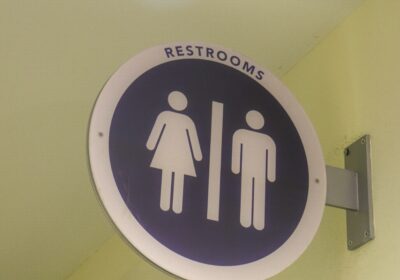‘Student debt is not distributed equally because pay is not distributed equally.’

Minorities carry heavier student debt burdens, and inequality in the workplace is no help in overcoming them. SPECIAL TO THE ORACLE
Higher education is an investment many borrowers make on the promise that the money they put into tuition can one day be paid back with the level of income acquired from earning a degree. But with the Federal Reserve Bank of New York reporting that 45 million Americans owed $1.4 trillion in student loan debt in 2018, the investment put into a degree has not appeared to pay for itself. This fact is especially true for women and racial minorities.
Student debt is not distributed equally because pay is not distributed equally. Working to close pay inequality would help resolve the disparities in debt. Women and people of color are disproportionately burdened by higher debt. The American Association of University Women (AAUW) reports that the debt owed by women makes up two-thirds of student debt at over $800 million.
Time magazine reports that black and low-income students are more likely to borrow more for a Bachelor’s degree. Eighty-one percent of black students attending a public college or university graduated with student loans. They also borrow around $3,500 more than white students.
There is not a simple explanation or solution as to why certain minorities carry heavier student debt burdens. Higher education should be accessible to all students. The price a student pays for their degree should not be based on social demographics. The existing cultural structures that establish where individuals fall into socio-economic groups cannot be changed overnight, but implementing strategies to close large gaps in equality can be made, specifically in gender and racial pay gaps.
Minimizing pay inequality can help reduce student debt inequality. Borrowing more but earning less is paradoxical. It can trap students in a cycle of debt that is difficult to escape. How can a person effectively manage repayments if their income is insufficient and inconsistent with their peers’ earnings? This system is not only counterproductive, but also dysfunctional and unsustainable.
In 2015, the Pew Research Center estimated that black people earned 75 percent in median hourly earnings as much as white people and women earned 83 percent as much as men. These large gaps in income are partly responsible for the student debt inequality currently plaguing borrowers.
Some type of degree has become a required qualification for obtaining a moderate to higher paying job. It is this standard that encourages many students to pursue higher education. A degree is intended to elevate a low-income student into the middle class. The disparities in student debt serve to keep certain social groups in the same economic standings that they are attempting to improve.
Male and white should not be part of the credentials one needs to earn a higher income or accumulate less debt.
Gender and racial pay gaps should be addressed so all students are able to feel the return of their investments in higher education. This is easier said than done. Cultural attitudes regarding women and people of color in the workforce must first shift to ensure all employees are paid equally. Equal pay can lead to equal distribution of student debt.
Since corporations are legally bound by anti-discrimination policies, equalized income allotment should be considered a caveat of these laws. Pay gaps may not always be a conscious effort by employers, but cultural biases are often implicit. A policy mandating that employees with the same skill sets be paid in the same amount would help close income disparity between different social demographics and ensure that even implicit biases are being curbed.
Student debt inequality must be addressed on a pre- and post-graduate level. For women and people of color, the input into their educational investment is not meeting the output from their eventual income.
Debt and income should not vary by gender and race.
Higher education enables students to improve their lives. But the inequalities in student debt and employee income thwart the efforts and achievements made by women and people of color when earning their degree.
Paige Wisniewski is a junior majoring in interdisciplinary social science.








